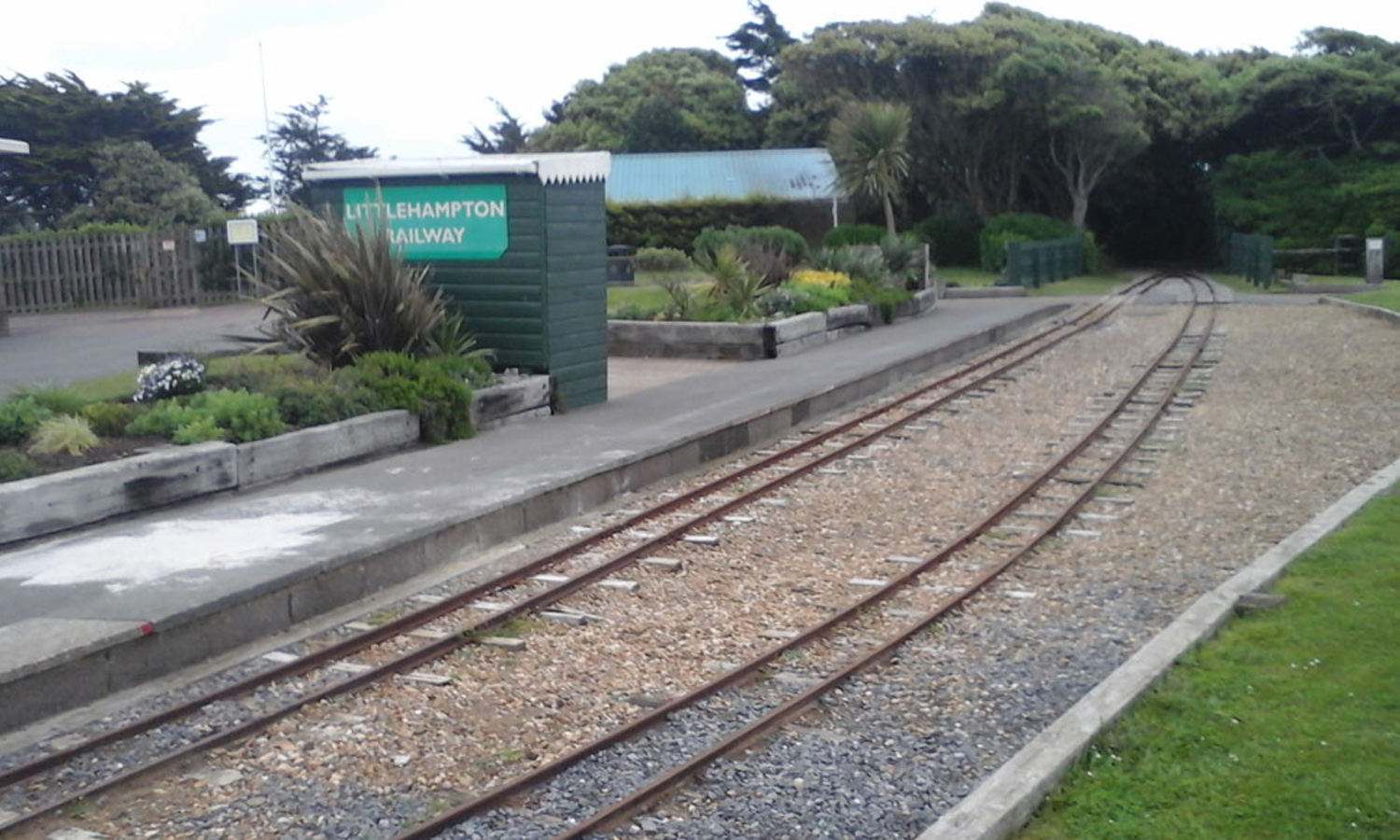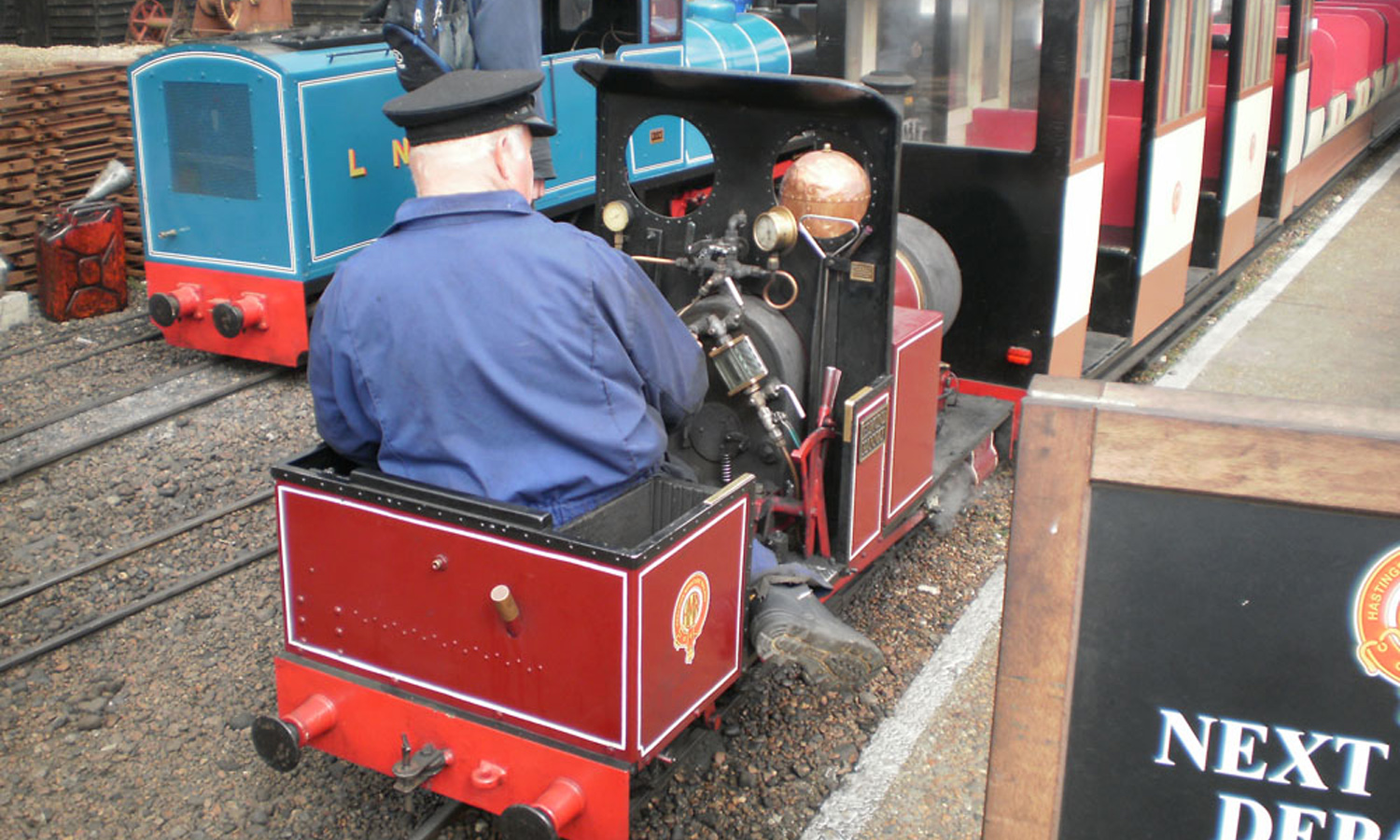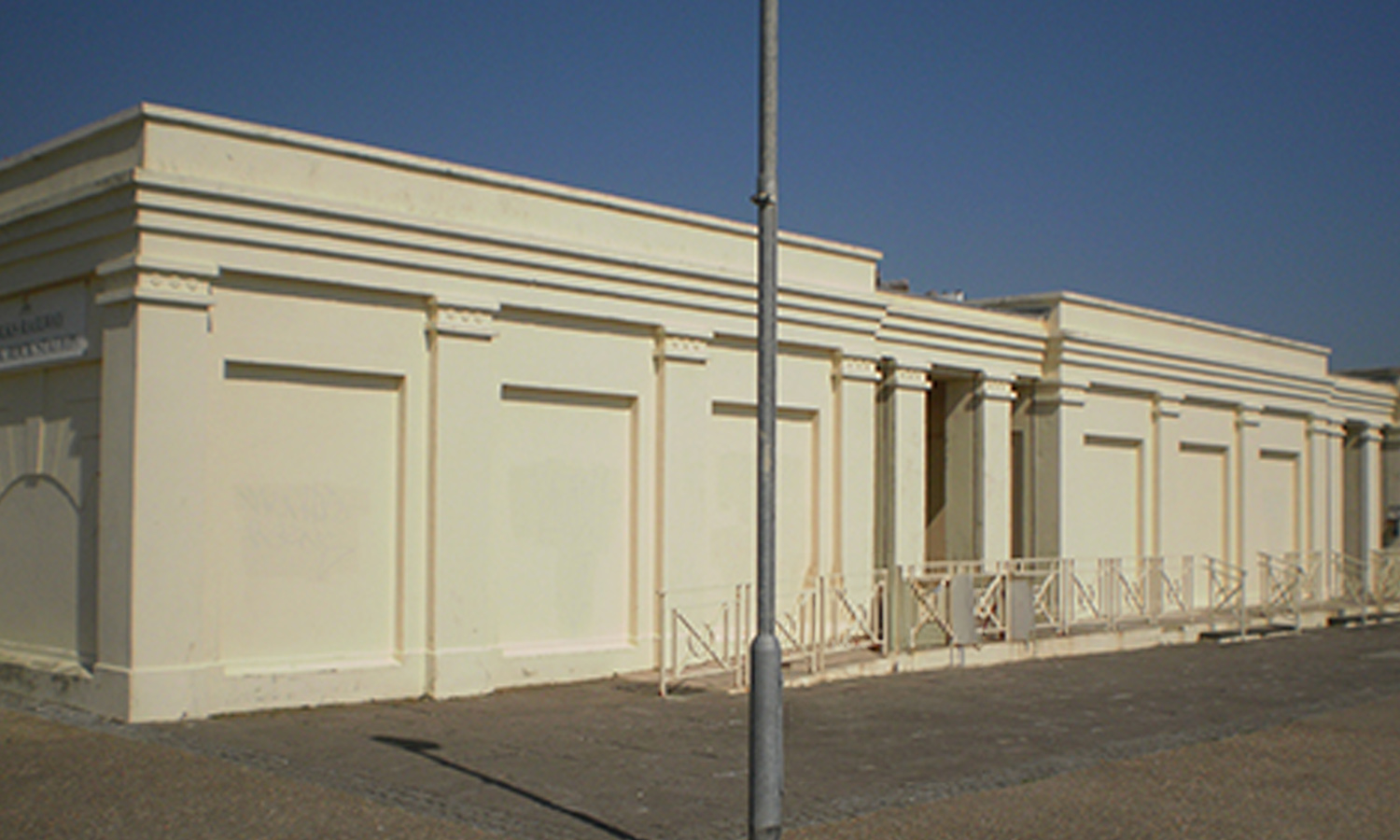

From the 1930s onwards, when railway interest was at its height, many seaside towns did not feel complete unless there was a miniature railway to ride on. A lot of these have unfortunately long gone, but several still remain, even if they have closed down several times and come back yet again.
As model railway enthusiasts, we love anything narrow gauge (under 4ft 8 and a bit inches), so we love a miniature railway - many of which fall into the narrow gauge category. For example, you can have an 18" narrow gauge line, as at Chatham dockyard, or a 15" miniature railway, as on the Romney, Hythe, & Dymchurch Railway in Kent. Essentially, a miniature railway uses scaled down locomotives or large models of standard gauge stock, principally for tourist or pleasure garden type lines.
We took a tour around the South Coast to visit some of the region’s best miniature railways, stopping off at Littlehampton, Hastings, Brighton and the South Downs, all of which are just an hour or two away from our Arundel HQ at most.
Firstly, we stopped off at Littlehampton Miniature Railway, which is just a short drive away from our Gaugemaster model shop.

Passengers riding the Littlehampton Miniature Railway on a sunny day. Cuddly toys sit on top of the carriages.
The earliest reference to the building of a Littlehampton line dates back to 1937. Nothing was approved until after the war in 1947 when a Mr.G.Cookson, who had operated several 10¼" lines on the south coast before the war, was granted the concession to build a line between Mewsbrook Park and Norfolk Road Park. The gauge chosen was the unusual one of 12¼", due to increased stability over the 10¼" gauge he had used before.
There were only ever 6 12¼" gauge railways in the country, and the Littlehampton line is the oldest. Two 4-6-4 steam locomotives and eight open coaches were ordered, and the line opened in 1948.

Aerial map showing the route of the Littlehampton Miniature Railway along the town’s seafront. A turntable sits at each end of the line.
The original licence only ran up to 1950, but was then taken over by messrs Turner and Mead who ran it until 1969, when it was sold once again to a Mr Maxfield, who renamed the locomotives Gordon (running number 1005) and Henry (running number 2010). He also added other locomotives to the fleet, including a diesel from Bognor pier, which was regauged and lasted on the line for the next 20 years. By 1984, the steam locos were worn out, so a small petrol locomotive called "Zion" was purchased from Hotham Park in Bognor, and extra coaches from Chessington Zoo.

The Littlehampton Miniature Railway station building. A white fence separates the line and the platform.
By 1995, with tourist traffic dwindling due to overseas holidays being more popular, it looked like the end was nigh. However, a Mr Chapman who operated the Hotham Park Railway stepped in, but often no trains actually ran, so the line then passed to new owners in 1997. With the passing of the owner’s wife in 2008, the lease came up for renewal in 2010, and C Phillimore took over the line.
In 2011, the track layout at the Mewsbrook end was totally revised, with new platforms, and a new diesel hydraulic locomotive called ‘Green Dragon’. Steam returned briefly in 2012, in the form of ‘Sherpa’, a half size model of one of the 0-4-0 Darjeeling B class locomotives from Fairbourne, and ran until May 2012.

Norfolk Road Park Station, a small green wooden shelter at the side of the Littlehampton Miniature Railway line.
By 2015 however the operators decided that it wasn’t not commercially viable, and, after the Halloween specials that year, that would be the end of the line for the Littlehampton Miniature Railway. The locomotives and stock were removed in December, and that could have been the end, if it wasn’t for a volunteer organisation called the Littlehampton Heritage Railway Association, which was set up under the chairmanship of Mr C Shanks. The non-profit making line commenced running in July 2016, and continues to this day.
Next, we travel East - to East Sussex to be precise - to the town of Hastings, site of the Battle and holding treasured memories for everyone who grew up with seaside day trips here from Sarf East Lunden.

A red sign with white lettering states ‘Welcome to Hastings Miniature Railway. Rock-a-Nore Station’.
In the 1960s and 70s, Hastings Miniature Railway was always a must-see, as was the East and West Hill Cliff railways, all based at the eastern end of the town by the old town and the net shops. These delights are still there and thriving today.
The Hastings Miniature Railway opened in 1948, when it relocated from a short line at St Leonards-on-Sea in 1947, which had been built by the well-known miniature railway enthusiast Capt. J.E.P.Howey. He’s of course, best remembered for the building of the legendary Romney, Hythe and Dymchurch railway further along the coast. In 1948, the Hastings line was sold to Ian Allen and Jim Hughes, and has continued to operate to this day.
Originally there were 3 stations: Rock-a-Nore, East Beach Street, and Marine Parade.

A cluster of wooden station buildings at the side of the Hastings Miniature Railway. A larger grey shed is positioned opposite a platform shelter on either side of the track.
The Hastings Miniature Railway was originally operated by steam locomotives. ‘Firefly’ was an 0-6-0 tender locomotive, rebuilt in 1945 by RH & DR engineers from an 0-6-0 pannier tank built by H.Bullock, a well-known maker of miniature locomotives. Joining it was ‘Royal Scot’, a 4-6-0 model of the Royal Scot class built by Bassett-Lowke, another well-known maker.

A driver sits in the red painted engine cab of one of miniature trains. Alongside the red train, there is also a bright blue LNER engine.
Other locomotives arrived later. ‘Hampton Court’ (a 4-4-2 built by Twinings in 1939) ran at Dudley Zoo, Cleethorpes, Lowestoft, and Hunstanton, before arriving in Hastings in 1958. ‘Uncle Jim’, a 4-4w DM diesel locomotive, was built on site in 1968 and ran until 1993. Following its sale, it moved to Knebworth until 2012, and then after a full overhaul, returned to Hastings and still runs today.
‘Western Meteor’ was another diesel, which ran from 1979 to 1982, and finally ‘Mis-Nat’, a centre cab locomotive. This was known as the Meccano engine due to its strange proportions, and ran from 1984 till 1990, when it went to Basildon. It was moved back to Hastings in 2013, when it acquired a steam outline profile.
During the 1980s, the line was allowed to run down, the buildings became unkempt, sidings were neglected or lifted, and the passing loop at East Beach was removed. Two-train operation ended and the remaining locomotives were sold, but a new locomotive ‘Princess Swee' Pea’ was bought from Alan Keef Engineering.
The line changed hands again in 2010, and a new lease was granted, providing that a lot of changes were made. So in August of that year, the Hastings Miniature Railway reopened, two new locomotives were added to the fleet, the passing loop at East Beach was restored, and a new workshop and turntable were added at Rock-a-Nore.

A red locomotive driving along the track of the Hastings Miniature Railway. A shed building is positioned to the right of the train.
When we visited, the staff there were chatty and helpful, and the line, stock and buildings were well-kept - all in all, it was a very pleasant line to visit! Currently, there are at least seven locomotives on site, with a couple more being rebuilt.
Also in Hastings there are two cliff railways, which on a clear day give fine views across the town - it’s a great day out by the sea for railway enthusiasts!
On a particularly glorious day, we ventured a short way down the coast to Brighton, and while there, renewed acquaintance with an unusual railway - the Volk's Electric Railway, which is the oldest operating electric railway in the world.

The Volk’s electric train in action. A driver stands to operate the red and cream painted train from the cab, accompanied by an assistant.
This line, the first of its kind, was designed by Magnus Volk. It was originally built to 2ft gauge in 1883, and ran for a quarter of a mile (402m) between what was known as Swimming Arch (opposite the Brighton Aquarium) and Chain Pier (the future Palace pier). 50v DC electrical power was supplied via the two running rails, in much the same way that we power our model trains today!
In 1884, the line was extended a further half a mile (0.8km) to what is now Halfway station, and re-gauged to 2 ft 8 ½ inches (825mm). The power was increased to 160v DC, still using the two running rails, but because of leakage a third offset power rail was added in 1886.
In 1901, the line was again extended to Black Rock, and ran quite happily till 1935, when a lido was built, which caused the line to be cut back by 200 yards to accommodate it.

Black Rock Station on the Volk’s Electric Railway - a large cream building with columns built in a classical style.
The new Black Rock station was built in 1937. In 1940, the Brighton Corporation took over the line, but with the threat of invasion, defensive measures caused closure of the line until 1947, when the line was rebuilt using heavier rail. Black Rock station was rebuilt, as the original had suffered during the war years. The line reopened to the public in 1948.
Due to the increase in traffic, two car multiple operation started in 1964. In 1995 the Volks Electric Railway Association was formed. Due to a stormwater storage scheme, the Black Rock end of the line was cut back, and the 1948 station was demolished and replaced by a new single platform station, which opened in 1998.
Since then, a new visitor centre and ticket office have been built at Aquarium station, as well as a new depot with a viewing gallery at Halfway, with money granted by the National Lottery Heritage fund.
The present cars on the line were built in 1901 on-site at the Paston Place works (now the site of Halfway station), with Compagnie Electrique Belge 8 hp 6kW motors as the power plant.

The Drivers Cab of the Volk’s Electric Railway locomotive, which features a wooden bench with metal railings and a small manual steering wheel.
The line used by the Volk’s Electric Railway today is still the 2' 8½" gauge, but the power is 110v DC, and it is one mile long. It’s single track, with a passing loop at Halfway station, and two more passing loops midway between the termini and Halfway, but these are rarely used in service.
There are currently seven cars in use, plus a 1988 Motor Rail diesel (previously used at the Butterley brickworks), but now used for maintenance and inspection duties at times when the power rail is switched off.
A token system is used, ensuring that only one car is in each section at a time. However, in busy periods, multiple cars can occupy one section, but the token system is still used.

The Volk’s Railway in operation. An early 20th century carriage is journeying along the Brighton seafront.
The Volk’s Electric Railway is a very pleasant way to spend a couple of hours, especially on a nice day, as you can see from the pictures, with informative and friendly staff on hand as well.
Hidden away in a garden centre in rural Sussex is a little gem of a miniature railway. Run and operated by a purely voluntary staff, the South Downs Light Railway exists to provide a new experience to those avid gardeners out to purchase new plants or visit the site’s cafe.

A miniature steam locomotive being driven along the track of the South Downs Light Railway, next to a picnic area.
Many years ago, Cheals Garden Centre became the base for a 7¼" miniature railway, which unfortunately fell into disrepair. By 2000, it was largely derelict, but the site was acquired by a group who installed a 10¼" gauge railway, which grew into the railway we can see and ride on today.
Based in what is now the Britsh Garden Centre, there’s nearly a mile of track laid out, giving visitors a unique experience into model engineering at its finest.
Small steam, and sometimes diesel locomotives, transport passengers around a maze of track from the main station every 15 minutes or so - through cuttings, tunnels and so on. The train passes items of interest, especially to small children, in smart coaches (which can be open in good weather) around the garden centre site.

A close-up of a miniature engine named ‘Peggy’ on the South Downs Light Railway. A driver sits in the cab as it waits to depart.
The line is fully signalled; so, 3 trains can operate simultaneously with large numbers of passengers especially on gala days.
We were lucky enough to be invited on a tour of the workshops, and were amazed at the scale of operations of this enterprise, with members’ locomotives in various stages of restoration and repair, and awaiting service on the main line.
The group also undertakes building work, such as the new locomotive shed, water tower and signal box, in addition to the upkeep of the locomotives and rolling stock, and produce superb work that would shame a few full-size heritage railways.

A view of the curved track of the South Downs Light Railway. To the right of the approaching miniature steam locomotive are plants in bloom. To the left, are the Garden Centre buildings.
If you have an interest in railways and gardening, a visit to the South Downs Light Railway is well worth it. Volunteers are welcomed with open arms, as this railway is run purely on a voluntary basis or, as we were told, for the love of it.
Discover an extensive collection of model railway supplies at Gaugemaster and build your very own railway in miniature. Shop by scale or by brand as you browse the brilliant ranges on offer at the model shop for big imaginations. All the railways featured here are known as either miniature or narrow gauge railways. There are various narrow gauge model railway scales that are available, with the main commercially available scales being OO9, HOe and O-16.5.
All these scales can also be combined with products from their companion scales, for example a OO Scale building is the same scale in OO as it is in OO9. An O Scale vehicle is suitable for an O-16.5 layout, and there are a variety of scenic products suitable for all the scale available too.
For more information on the different scales and narrow gauges, check out our article on Model Railway Gauges vs Model Railway Scales, and if you have any questions about one of our products, please do contact us.
This article has been written by our staff here at Gaugemaster, drawing on thousands of hours of modelling experience. Each article has been written to make it easy for everyone from beginner to expert to learn and expand their own knowledge base. If there is something you would like to see covered, feel free to contact us to suggest a topic - we’d love to hear from you.
For more articles like this, and many others; don't forget to check out the Gaugemaster Knowledge Base.